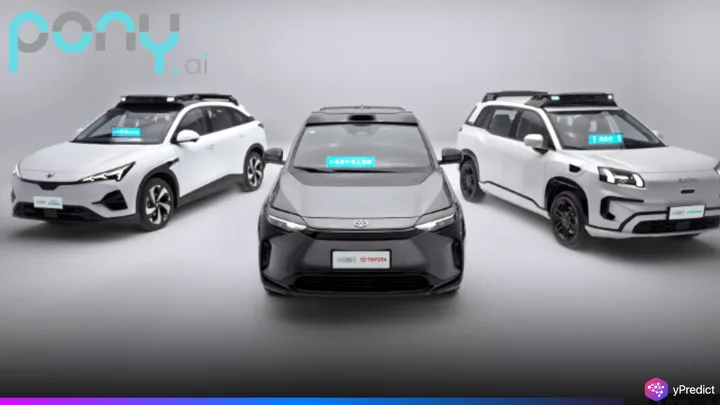
Pony.ai has kicked off public road testing of its seventh-generation Robotaxi in Guangzhou and Shenzhen. This marks a critical step as the company moves from lab development to real-world validation. The autonomous vehicles, co-developed with Guangzhou Auto’s Aion V model, feature Pony.ai’s latest Gen-7 driving system. The new system was unveiled last month at the Shanghai Auto Show. With this rollout, Pony.ai strengthens its path to commercialize autonomous transport at scale across China’s largest urban hubs.
Next-Gen System Designed for Real-World Roads
The Gen-7 autonomous system, developed by Pony.ai, offers major upgrades over its predecessor. Built with 100% automotive-grade parts, it has cut hardware costs by 70%. It’s also designed to support fast integration into various vehicle models, speeding up deployment. Six mass-produced sensors offer full 360-degree visibility, eliminating blind spots and improving safety in poor weather.
The Robotaxi also includes a sensor cleaning system to ensure reliable operation during rain or dust storms. A core driver of the system is Pony.ai’s proprietary “PonyWorld” model, which uses reinforcement learning to improve performance over time. “The Aion V with our Gen-7 system marks a huge step forward,” said Dr. James Peng, Pony.ai’s CEO. “It shows how far we’ve come since launching our alliance with GAC in 2018.”
Robotaxi Trials Shift From Simulated Tracks to City Routes
Pony.ai’s road tests in Guangzhou and Shenzhen mark the transition to live testing in busy urban environments. The company has over 45 million kilometers of global test mileage. Its Robotaxi already operates in four major Chinese cities, covering complex areas like airports and high-speed rail hubs.
In the past two years, the vehicles have completed more than 500,000 hours of fully driverless operations. That experience informs the safety and adaptability of the Gen-7 system now hitting the streets. The goal is to hit mass production in 2025, with a fleet of more than 1,000 Robotaxis ready by year-end. With reduced system costs and simplified integration, Pony.ai aims to scale quickly and efficiently. Challenges remain, including public trust, regulatory hurdles, and operating safely in unpredictable traffic.
Pony.ai Targets Broader Robotaxi Commercialization
Pony.ai is laying the groundwork for wide adoption through a series of strategic partnerships. These include Tencent Cloud, Alipay, Amap, and ride-hailing leaders like Uber and ComfortDelGro. These partnerships will help bring Robotaxi services to more users across China and beyond. As the company moves from pilot programs to live deployment, its focus is clear: commercial readiness at scale.
The Gen-7 system, pre-installed on production vehicles, is a critical piece of that plan. Pony.ai’s full-stack approach, integrating its own software, hardware, and services, helps control quality and lower costs. By aligning with major platforms and city transit providers, Pony.ai aims to make autonomous rides a daily reality for urban passengers.
Pony.ai’s Road Testing Signals Its Shift to Scaled Deployment
Pony.ai’s move to begin road testing its Gen-7 Robotaxis marks a turning point in the race to commercialize autonomous mobility. With safety-focused upgrades, lower system costs, and production-ready design, the company is turning years of R&D into tangible deployment.
As real-world data continues to shape system performance, Pony.ai’s platform is positioned to evolve rapidly. By combining in-house AI breakthroughs with mass-market manufacturing, the company isn’t just testing cars, it’s testing the next chapter of city transport. With its 2025 mass production goal in sight, Pony.ai is helping redefine how autonomy moves from concept to street-level scale.






